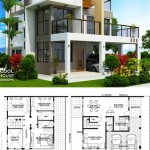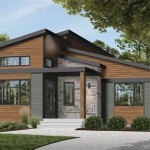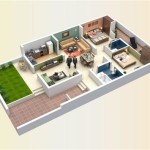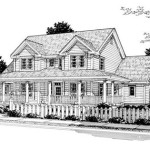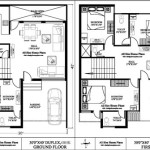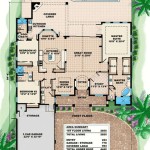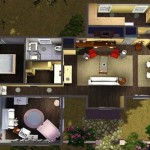Best House Plans for Empty Nesters in the USA
As children grow and leave the family home, many parents find themselves contemplating a significant lifestyle change. Downsizing from a larger family residence to a smaller, more manageable home becomes an attractive option. This transition presents an opportunity to re-evaluate housing needs and priorities, seeking designs that prioritize comfort, accessibility, and efficiency. The selection of a suitable house plan is crucial to creating a living space that enhances the empty nester experience. In the United States, a diverse array of architectural styles and floor plans cater specifically to this demographic, offering a range of options to suit various preferences and lifestyles.
Empty nesters often seek homes that require less maintenance, both indoors and outdoors. Features like low-maintenance landscaping, durable siding, and energy-efficient appliances become highly desirable. Interior layouts tend to prioritize single-level living, eliminating the need for stairs and facilitating aging in place. Furthermore, adaptable spaces that can serve multiple purposes, such as a home office that can convert into a guest room, are increasingly valued. The overall goal is to create a comfortable, functional, and aesthetically pleasing environment that supports an active and fulfilling lifestyle during this new phase of life.
Prioritizing Accessibility and Aging in Place
A key consideration for empty nesters when selecting a house plan is the concept of aging in place. This involves designing or modifying a home to allow residents to live there safely and independently as they age. Features that promote accessibility are paramount. Single-story layouts are a prime example, eliminating the potential hazards associated with stairs. Wide doorways and hallways accommodate wheelchairs and walkers, ensuring ease of movement throughout the house. Bathrooms designed with grab bars, walk-in showers, and comfort-height toilets are also important elements of an accessible home. These features not only enhance safety and convenience but also contribute to long-term independence.
Beyond structural elements, careful consideration should be given to the placement of essential amenities. The master bedroom and bathroom should ideally be located on the main floor, minimizing the need to navigate stairs. Kitchens designed with universal design principles, such as adjustable-height countertops and accessible storage solutions, can further enhance functionality and comfort. Smart home technology can also play a significant role in promoting accessibility. Voice-activated lighting, automatic door openers, and remote monitoring systems can provide added convenience and security, allowing empty nesters to maintain their independence and age comfortably in their own homes.
The choice of flooring is also crucial for accessibility. Hardwood floors, tile, and low-pile carpets are generally preferred over plush carpeting, as they provide a smoother surface for wheelchairs and walkers. Slip-resistant surfaces in bathrooms and kitchens are also essential to prevent falls. By incorporating these accessibility features into the house plan, empty nesters can create a home that is both comfortable and safe, allowing them to enjoy their retirement years with peace of mind.
Embracing Low-Maintenance Living
As empty nesters transition to a new phase of life, the desire for low-maintenance living often becomes a primary consideration. This involves selecting a house plan that minimizes the time and effort required for upkeep, both inside and outside the home. Smaller square footage naturally translates to less cleaning and maintenance. A well-designed smaller home can provide all the necessary amenities without the burden of excessive space to manage. Open floor plans can also contribute to a sense of spaciousness while minimizing the number of walls and corners to clean.
Outdoor maintenance is another significant factor. Opting for low-maintenance landscaping can significantly reduce the time and effort required for yard work. Xeriscaping, which involves using drought-tolerant plants and minimal irrigation, is an excellent option for those living in arid climates. Artificial turf can also eliminate the need for mowing, watering, and fertilizing. Alternatively, hiring a landscaping service can provide peace of mind for those who prefer to outsource their lawn care needs. Durable siding materials, such as vinyl or fiber cement, can also minimize the need for painting and repairs.
Inside the home, selecting durable and easy-to-clean materials is essential. Quartz countertops are a popular choice for kitchens and bathrooms, as they are resistant to stains, scratches, and heat. Vinyl flooring is another low-maintenance option that is both durable and water-resistant. Energy-efficient appliances can also contribute to lower energy bills and reduced maintenance costs. By prioritizing low-maintenance features in the house plan, empty nesters can free up their time and energy to pursue their hobbies and interests, enjoying a more relaxed and fulfilling lifestyle.
Incorporating Adaptable and Flexible Spaces
Empty nester house plans often benefit from incorporating adaptable and flexible spaces that can serve multiple purposes. As lifestyles evolve, the need for dedicated rooms may change, and having spaces that can be easily reconfigured is highly valuable. A spare bedroom, for example, can function as a guest room when visitors arrive but can also be used as a home office, hobby room, or exercise space the rest of the time. Designing these spaces with flexibility in mind allows homeowners to adapt their homes to their changing needs and interests.
Open floor plans are particularly well-suited for creating adaptable spaces. By minimizing the number of fixed walls, these layouts allow for greater flexibility in furniture arrangement and room usage. A large living room can be easily divided into separate seating areas or transformed into a dance floor for social gatherings. A dining area can be expanded or contracted depending on the number of guests. The key is to create spaces that are versatile and can be easily adapted to different activities and needs.
Another important aspect of adaptable spaces is storage. Adequate storage solutions are essential for keeping clutter at bay and maximizing the functionality of each room. Built-in shelving, hidden storage compartments, and multi-purpose furniture can all contribute to a more organized and adaptable living space. Closets can be designed with adjustable shelving and drawers to accommodate a variety of items. By carefully planning for storage, empty nesters can create a home that is both functional and aesthetically pleasing, allowing them to enjoy their retirement years in comfort and style.
Furthermore, consider spaces designed with future needs in mind. A room that could be easily converted into an in-law suite, should the need arise for live-in assistance or extended family care, provides an invaluable option. Similarly, a sunroom or enclosed patio provides a flexible space for enjoying the outdoors, regardless of the weather, and can serve as a place for relaxation, gardening, or entertaining.
Ultimately, the best house plan for empty nesters in the USA is one that reflects their individual needs, preferences, and lifestyle. By prioritizing accessibility, low-maintenance living, and adaptable spaces, empty nesters can create a home that is both comfortable and functional, allowing them to enjoy their retirement years to the fullest. The diverse range of architectural styles and floor plans available ensures that there is a perfect home for every empty nester, ready to embrace this exciting new chapter of life.
:max_bytes(150000):strip_icc()/SL-2049-F1-3204a31b3ccb426bade3f2380a29b2bd.jpg?strip=all)
Why Bellewood Cottage Is The Perfect House Plan For Empty Nesters
:max_bytes(150000):strip_icc()/bellewood-front-c9a517fbf0864908a6a2fcec4a736e74.jpeg?strip=all)
Why Bellewood Cottage Is The Perfect House Plan For Empty Nesters
:max_bytes(150000):strip_icc()/sl-2004_4cp_frontright_0-7fc4d68f01494c5f8cd449657af22329.jpg?strip=all)
House Plans Under 1 800 Square Feet Perfect For Empty Nesters

Empty Nester House Plans Retirement The Designers

Empty Nester House Plans Retirement The Designers
:max_bytes(150000):strip_icc()/nautical-cottage-a415ead01c7141f2bb653b790b15b1f4.jpg?strip=all)
House Plans Under 1 800 Square Feet Perfect For Empty Nesters

Empty Nester House Plans Retirement The Designers

Empty Nester House Plans Retirement The Designers

Empty Nester House Plans Retirement The Designers
:max_bytes(150000):strip_icc()/SL-2009_4CP-front_0-8fdca8e211214d4182e879d1a0af71de.jpg?strip=all)
House Plans Under 1 800 Square Feet Perfect For Empty Nesters

